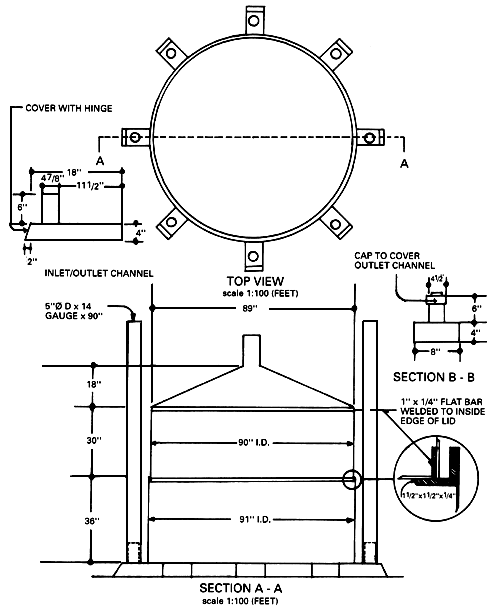The range of densities and moisture content within the stem of the coconut palm also influence its utilization as fuelwood or charcoal. Usually, the husks are preferred as fuel, and the shells for charcoal production. Due to their high density, coconut shells yield a high class charcoal. This charcoal is even exported to Japan for the manufacture of activated carbon.
The stem can be converted into firewood by cross-cutting and splitting it into billets of about 30 cm length. These billets have to be seasoned before burning. While the lower, outer part of the stem yields good firewood, the upper portion and particularly the upper core will only find a use as firewood where no other fuel is available. Seasoning takes too long, and the timber degrades rapidly when seasoned in billet-form. The slabs and offcuts of the lower stem portion can be used for generation of thermal energy, e.g. for heating a seasoning kiln. Sawdust, when compressed in an old can and with a center bore provided, renders good fuel for cooking. The can as such can be used as a stove. The burning time depends on the can size.
As mentioned earlier, in most cases coconut wood charcoal has to compete with that of the coconut shells, and there usually loses out for nearly any reason but that of bulk. There exists an abundance of charcoal kiln designs. For coconut wood, the portable charcoal metal kiln mark V designed by the Tropical Products Institute, London, UK, has proved successful (Photo 57, Figure 108).
Photo 57: Charcoal kiln “mark V”

Fig. 108: Charcoal kiln “mark V”

Description
The kiln consists of two interlocking cylindrical sections. The bottom section is made from 14 gauge mild steel, 2.30 m in diameter and 0.9 m high. The second section is made from 16 gauge mild steel, 2.25 m in diameter and 0.75 m high. Its conical cover is also made from 16 gauge mild steel. The kiln rests upon eight 0.10 × 0.20 m box section channels, each about 0.5 m long with closable vents and collars. It has four metal smoke stacks 0.13m in diameter and 2.25 m high. The kiln has a capacity of 8.6 m3 of wood. Advantages besides its good performance are that it easily can be manufactured locally, and that it can be disassembled and transported. If properly maintained, the kiln can last up to five years.
Production
The timber should be cut short, split into billets and seasoned before loading the kiln. Carbonization time can be reduced by using coconut wood with a moisture content below 30%. Assembly and loading the kiln takes two hours for two men. Lighting is done from the top in order to facilitate control and to increase production. Lighting and carbonization require an average of 20 hours, cooling time another 18 hours. Two men can unload the kiln in two hours. The kiln yields an average of 400 kg coconut wood charcoal per charge with a recovery of 21 %.
The chemical analysis of the charcoal has shown (Palomar, 1981):
| - moisture content: | 13% |
| - volatile combustible matter: | 14% |
| - ash content: | 3% |
| - fixed content: | 70% |
The high amount of powdered charcoal produced can be converted into briquettes. Briquetting is dependent on availability and costs of starch as a binder. Any locally available starch will do. It should be applied at about 5 – 10% by weight.